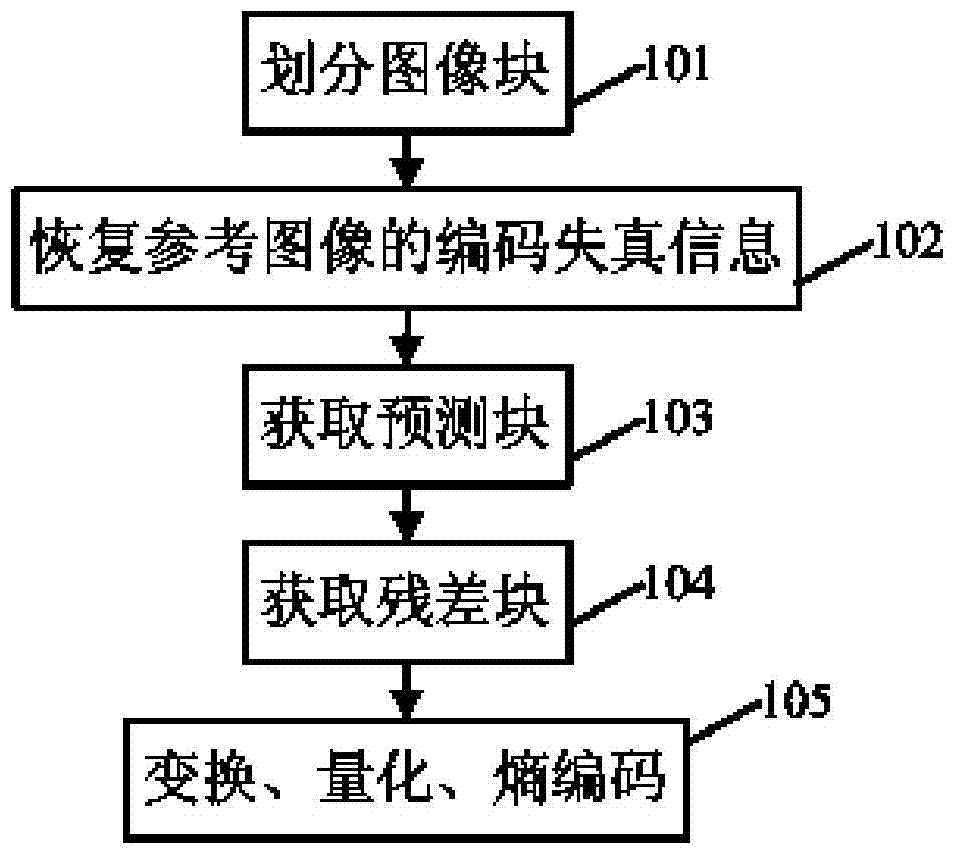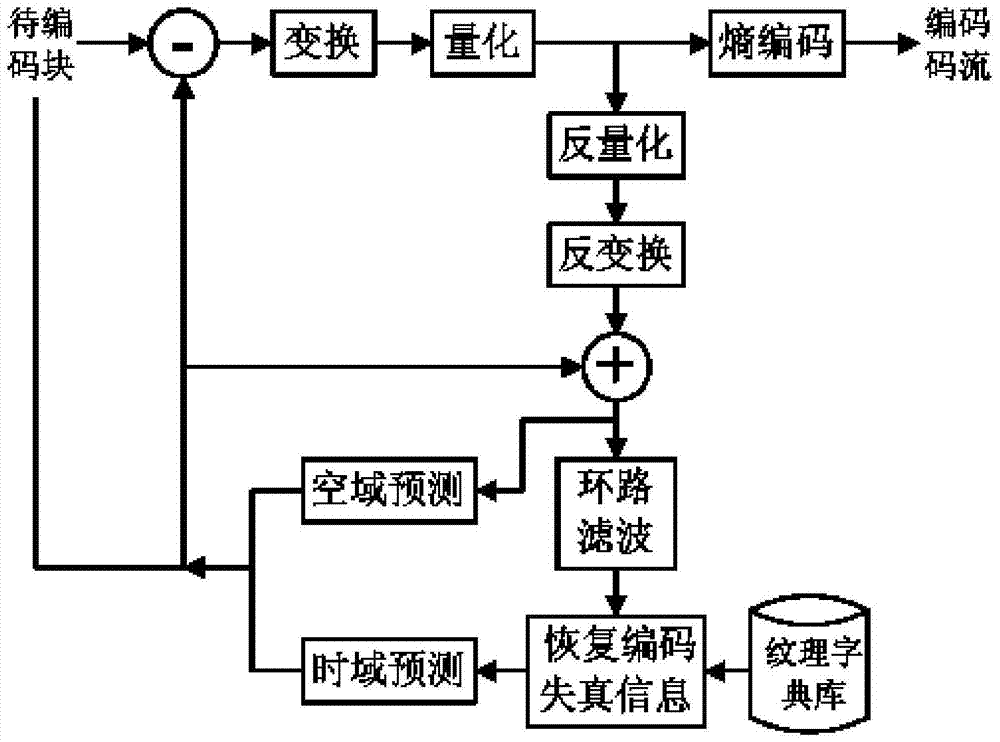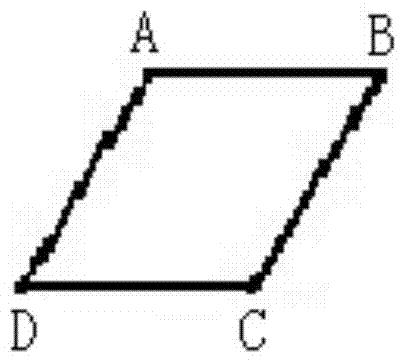A video encoding and decoding method and device based on a dictionary
A video coding and dictionary library technology, applied in the field of video coding and decoding, can solve the problems of loss of high-frequency information, loss of prediction efficiency, etc., and achieve the effects of improving coding efficiency, predicting block accuracy, and improving decoding efficiency
- Summary
- Abstract
- Description
- Claims
- Application Information
AI Technical Summary
Problems solved by technology
Method used
Image
Examples
Embodiment 1
[0037] Please refer to figure 1 and figure 2 , figure 1 It is a flowchart of a video encoding method based on a dictionary library in this embodiment, figure 2 It is a coding frame diagram of the video coding method based on the dictionary library in this embodiment. The video coding method based on the dictionary library provided in this embodiment includes:
[0038] Step 101: Divide a current image frame to be encoded in a video stream into several image blocks.
[0039] Step 102: Recover the encoding distortion information of the decoded and reconstructed image of the frame before the current image frame to be encoded by using the texture dictionary library to obtain an image after recovering the encoding distortion information, and use the image after recovering the encoding distortion information as a reference image. Coding distortion information includes high frequency information.
[0040] In a specific embodiment, the texture dictionary can be obtained by pre-t...
Embodiment 2
[0074] Please refer to Figure 4 , according to a dictionary-based video encoding method provided in Embodiment 1, this embodiment provides a dictionary-based video encoding device correspondingly, including an image block division unit 401, an image enhancement unit 403, a prediction unit 402, residual A difference block acquisition unit 404 and a processing unit 400 .
[0075] The image block dividing unit 401 is used for dividing the current image frame to be encoded in the video stream into several image blocks.
[0076] The image enhancement unit 403 is used to restore the coding distortion information of the decoded and reconstructed image of the previous frame of the current image frame to be coded by means of a texture dictionary library, so as to obtain an image after restoring the coding distortion information, and use the image after restoring the coding distortion information as The reference image; the texture dictionary library includes a clear image dictionary ...
Embodiment 3
[0088] Please refer to Figure 5 and Figure 6 , Figure 5 It is a flowchart of a video decoding method based on a dictionary library in this embodiment, Figure 6 It is a decoding frame diagram of the video decoding method based on the dictionary library in this embodiment. Corresponding to the dictionary-based video encoding method provided in Embodiment 1, this embodiment provides a corresponding dictionary-based video decoding method, including:
[0089] Step 501: Process the acquired video code stream to obtain a residual block of the block to be decoded in the current image frame to be decoded. Specifically, the acquired video code stream is subjected to entropy decoding, inverse quantization and inverse transformation to obtain a residual block.
[0090] Step 502: Restore the coding distortion information of the decoded and reconstructed image of the previous frame of the current image frame by using the texture dictionary library to obtain an image after restoring ...
PUM
 Login to View More
Login to View More Abstract
Description
Claims
Application Information
 Login to View More
Login to View More - R&D
- Intellectual Property
- Life Sciences
- Materials
- Tech Scout
- Unparalleled Data Quality
- Higher Quality Content
- 60% Fewer Hallucinations
Browse by: Latest US Patents, China's latest patents, Technical Efficacy Thesaurus, Application Domain, Technology Topic, Popular Technical Reports.
© 2025 PatSnap. All rights reserved.Legal|Privacy policy|Modern Slavery Act Transparency Statement|Sitemap|About US| Contact US: help@patsnap.com



